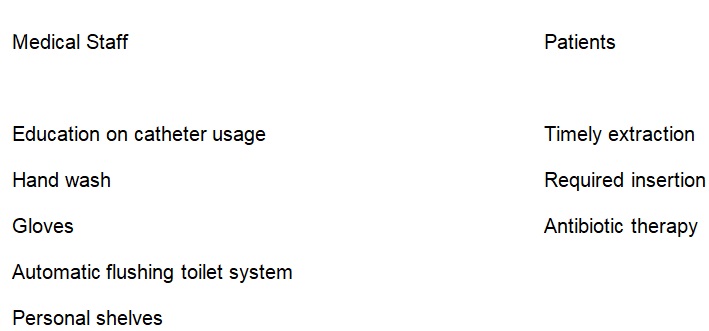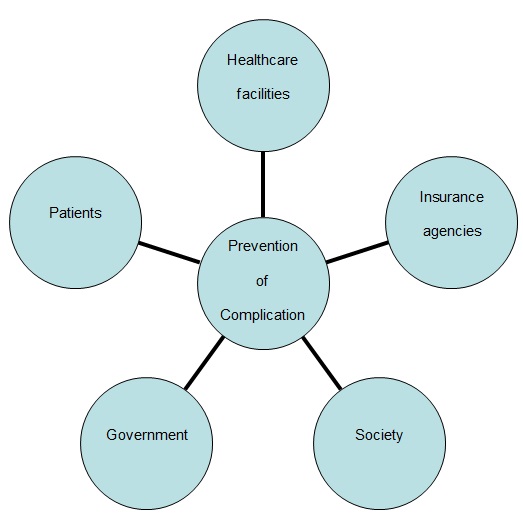Introduction
Foley catheters are often used in the healthcare facilities in order to streamline and simplify patients’ way to recovery. The lack of removal of urine can lead to kidney failure, which proves that the use of the catheter is critical. However, scientists and professionals claim that its usage also has a wide range of adverse effects on patients’ health (Stickler, 2014). Some of them believe it to be the most common cause of urinary tract infections, urethra damage, and bladder stones. As a result, a lot of research works were made with the intention to find out how such complications can be prevented. Professionals suggest a wide variety of initiatives, including additional education for nurses, monitoring, in time extraction and others.
Data Examination
In the framework of the conducting research, the complication prevention of Foley catheter insertion is discussed. The issue is investigated within the surgical patient population in Kendall Regional Medical Center. Still, there is no source of the information that can cover all mentioned peculiarities yet. With the attempt to create one, various data was collected from peer-reviewed articles that discuss complications caused by Foley catheter and their prevention in similar organizations. Different populations were taken into consideration so that the results could be applied to various groups of patients, including surgical ones.
Previously conducted parts of the research showed that the usage of Foley catheter is likely to cause urinary tract infections due to the encrustation and blockage. The data led to the fact that catheter extraction that is maintained at the appropriate times can prevent associated infections. Except for that, research results obtained by professionals showed that special education for nurses can also prevent urethra damage.
Review the Results
The study conducted by Love and Rodrigue (2013) showed that the usage of Foley catheter can have extremely adverse influences on people’s health. Professionals draw a line, which revealed how various problems are connected to each other. They proved that the infection can have its own complications, which often lead to death. In this way, they claimed that the development of the effective preventive measures is required, as they can save the life of the patients. The authors believe that the best solution to such problem can be found with the help of utilizing an evidence-based approach. The study showed that limiting the use of catheters, usage of sterile technique and special guidelines, and timely removing are the most effective interventions.
Shigemura, Takase, Osawa, Takaba, and Nomi (2015) found out that a range of complications can be prevented if professionals wash hands and use gloves. They also underlined that positive alteration can be seen when the staff uses automatic flushing toilet system and usage of personal shelves. However, it is also critical to maintain surveillance, as patients’ condition is a significant measure.
Antibiotic therapy was discussed by Stickler and Feneley (2010). The scientists stated that such treatment can prevent catheter encrustation and blockage as showed the results of the experiment maintained at the Hyogo Prefectural Rehabilitation Center.
Carter, Reitmeier, and Lauren (2014) came up to the conclusion that unit policy changes can help to prevent complications associated with the usage of Foley catheter. They offered to recheck if there is a necessity to insert the catheter and to do it in a right way to prevent the damage of the urethra. They also believed that it is vital to remove it as soon as possible and prevent infections. Finally, appropriate training for the relevant staff is required.
Schneider (2012) claimed that nurses require decent education on the insertion, removal, and care of Foley catheters. They should be able to implement best evidence-based practices to shorten recovery time, reduce healthcare costs, and mortality rates.
Results as Trend
The results obtained from the peer-reviewed articles showed that scientists and healthcare professionals tend to emphasize the criticalness of complications obtained due to the usage of Foley catheter, paying attention to interventions that deal with both patients and medical staff.
Prevention of Complications

Except for that, it is stated that complications of catheter use and infection are connected and result in death.

Influences of the Trends
Mentioned trends are useful for the current research because they affect it greatly. They prove that the attention is to be paid not only to the preventive measures that include some maintenance techniques and medications but also personal hygiene of the medical staff. In this way, the research is to include additional information that initially seemed to have nothing in common with the discussed topic. Except for that, it is critical to consider several levels of complications. For example, it is not enough to reveal the way catheter usage can lead to associated urinary tract infections and urethra damage, the outcomes of dealing with them should also be pointed out. In this way, more generalized results will be obtained, and their effectiveness will increase.
Summary of the Results
The authors of the articles pay much attention to the infections that can occur because of the catheter usage. They believe that proper insertion and extraction are vital, as they can greatly reduce risks of complications. They emphasize that nurses require additional education but fail to discuss this issue from the perspective of patients while it would be surely advantageous if they know how everything works.
The results of the studies showed that professionals tend to associate prevention of complications with various shareholders. They consider what can be done by both patients and nurses and also point out how effective interventions can affect patients, healthcare facilities, insurance agencies, government and the general public. Due to the implementation of earlier identified preventive measures, patients will have an opportunity to recover faster so that nurses will not be so overloaded. A wider range of opportunities will be provided for other population, as professionals will have more time for other patients and more free places will be available. Patients will have better health outcomes, and their healthcare costs will reduce. It also means that the amount of money paid by insurance agencies will decrease, which has a positive influence on the economic condition. Finally, governmental interventions made to reduce mortality rates and provide better access to health care will be affected, as a part of work will be done by the prevention of complications that are associated with the usage of Foley catheter.

Conclusion
Taking everything mentioned into consideration, it can be stated that the usage of Foley catheters can be rather advantageous when it is maintained in a right way. In order to prevent possible complications, professionals need to provide additional education for nurses who monitor patients’ condition to define the best time for catheter extraction and provide antibiotic therapy. Except for that, it is critical to offer them appropriate conditions that allow to maintain decent hygiene.
References
Carter, N., Reitmeier, L., & Goodloe, L. (2014). An evidence-based approach to the prevention of catheter-associated urinary tract infections. Urologic Nursing, 34(5), 238-241.
Love, N., & Rodrigue, D. (2013). Catheter-associated urinary tract infection prevention in the oncology population: an evidence-based approach. Clinical Journal of Oncology Nursing, 17(6), 593-596.
Schneider, M. (2012). Prevention of catheter-associated urinary tract infections in patients with hip fractures through education of nurses to specific catheter protocols. Orthopaedic Nursing, 31(1), 12-28.
Shigemura, K., Takase, R., Osawa, K., Takaba, K., & Nomi, M. (2015). Emergence and prevention measures for multidrug resistant Pseudomonas aeruginosa in catheter-associated urinary tract infection in spinal cord injury patients. Spinal Cord, 53(1), 70-74.
Stickler, D. (2014). Clinical complications of urinary catheters caused by crystalline biofilms: Something needs to be done. Journal of Internal Medicine, 276(2), 120-129.
Stickler, D., & Feneley, R. (2010). The encrustation and blockage of long-term indwelling bladder catheters: a way forward in prevention and control. Spinal Cord, 48(11), 784-790.
